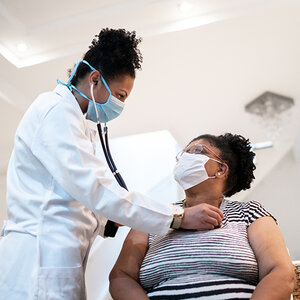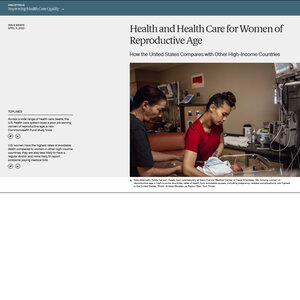Women’s health disparities exist between states, report finds

Significant disparities exist between states in reproductive care and women’s health along with deepening racial and ethnic gaps in health outcomes, a report from the Commonwealth Fund finds.
Using 32 measures to evaluate each state on health care access, affordability, quality of care, and health outcomes for U.S. women, the report, the 2024 State Scorecard on Women’s Health and Reproductive Care, found that overall, death rates per 100,000 women from all causes among ages 15 to 44 were highest in southeastern states, with the top causes of death including preventable factors such as pregnancy complications, substance use, COVID-19, and breast or cervical cancer. Overall, the five lowest-ranked states for health system performance for women are Mississippi, Texas, Nevada, Oklahoma, and Arkansas, and the five highest-ranked states are Massachusetts, Vermont, Rhode Island, Connecticut, and New Hampshire. Part of the Commonwealth Fund’s ongoing series on state health system performance, the report found that states with abortion restrictions often have fewer maternity care providers, with Arkansas, Oklahoma, Alabama, and Idaho having the fewest maternity care providers per 100,000 women of reproductive age; and that women of reproductive age in states that had not expanded Medicaid eligibility were most at risk of going without coverage and of skipping needed care because of cost, with the highest uninsured rates in Texas, Georgia, and Oklahoma.
The Commonwealth Fund’s first comprehensive examination of women’s health care in all 50 states and the District of Columbia found that nearly all states have witnessed an upward trend in syphilis among women of reproductive age since 2019, with infection rates highest among American Indian and Alaska Native women. In addition, the rates of maternal deaths are highest in the Mississippi Delta region, including Arkansas, Louisiana, Mississippi, and Tennessee, which all now have full abortion bans. Conversely, Vermont, California, and Connecticut had the lowest rates of maternal deaths.
“Looking across states and comparing their health care systems is an important way of telling us what is and isn’t working in American health care,” said the study’s lead author, Sara R. Collins, Commonwealth Fund senior scholar and vice president for healthcare coverage and access. “The scorecard’s findings are deeply concerning and underscore the urgent need for federal and state policies to expand women’s access to affordable, timely reproductive care and other essential health services, regardless of who they are, what they earn, or where they live.”
(Photo credit: Getty Images/FG Trade)





